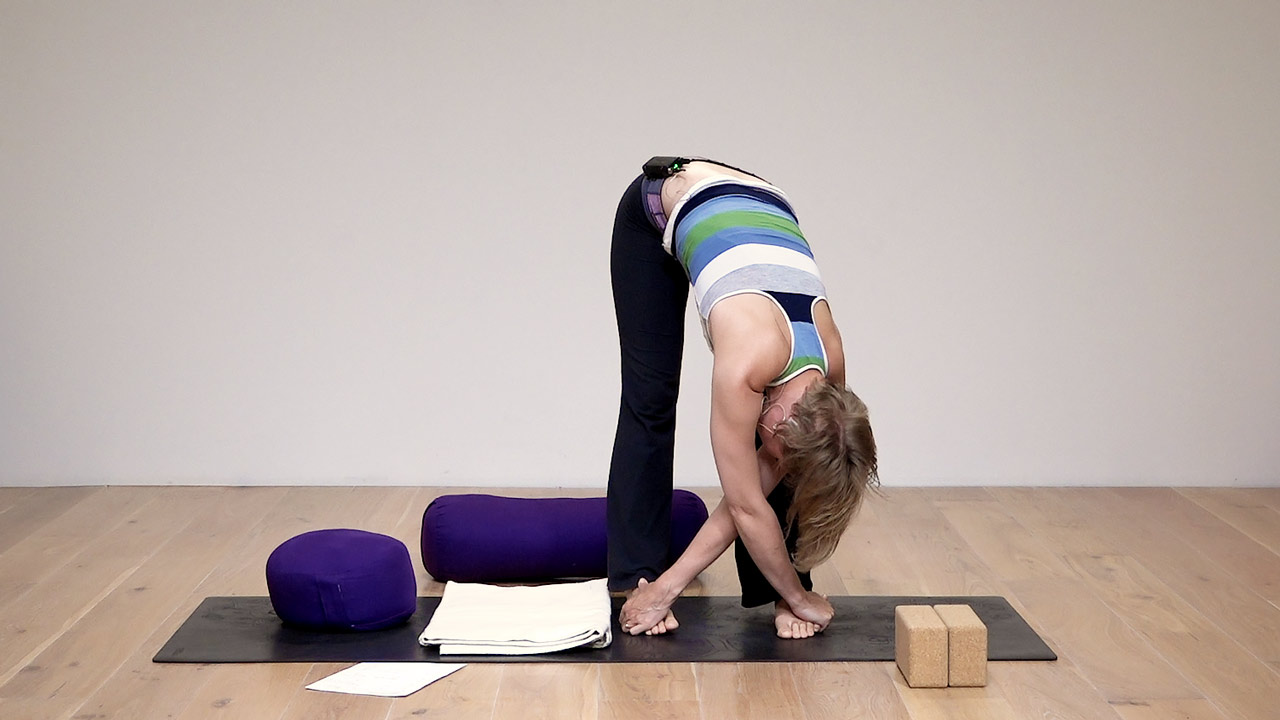We may not be able to see them, but the channels of energy flowing through the subtle body hold immense power and the potential to help us feel our best in body and mind. We explore the three energy channels you’re likely to hear about in a yoga class – Sushumna, Ida & Pingala – and how to use them for calmness, creativity, energy and maybe even enlightenment…
The origins
Thousands of years before X-rays and MRIs, ancient civilisations regarded the intricate workings of the inner body in a very different way. Across the East, holistic medical systems like Traditional Chinese Medicine (TCM), Tibetan medicine and Ayurveda understood that even though we can’t see them, there are countless channels, vortexes and layers of energy running through us. TCM refers to these channels of energy as meridian lines, whilst the Yogis of India first called them Nadis. If you’ve ever been to a Kundalini yoga class, practiced pranayama or visualisation, you may have come across these subtle energy channels before, but do you know how to work with them to elicit powerful effects?
Energy channels
It is said that there are over 72,000 subtle channels of energy running through the body. Whilst veins and arteries carry blood and oxygen, these invisible channels carry prana and Qi – our ‘life force energy’. The ancients understood that just as a problem within veins and arteries can result in physical issues, a blockage or deficiency within the Nadis and meridians can manifest as various physical, psychological and emotional imbalances. In recent years, researchers have even found that the meridian lines correspond perfectly to the lines of fascia – a connective tissue responsible not only for physical wellbeing, but that also has the potential to hold emotions too – think of it as holding ‘issues in your tissues’.
Within yogic texts, there are three channels of energy that can help to change our energetic state, and encourage a powerful energy known as Kundalini to rise up the spine to the top of the head – where the upper Chakras (powerful energy centres) are found – potentially resulting in a state of bliss and enlightenment. These three channels are known as Sushumna, Ida and Pingala. Just like the meridian lines, scientific research has also found that when we stimulate these energy channels through breathwork or other means, it can have a very real effect upon the mind and body too.
Kundalini energy
At the very base of the spine, we find our lowest and most primal base energy centre – Muladhara Chakra. Just below this point is said to be an abundance of potential energy just waiting to move. Think of this as the potential we have to feel our most powerful and vibrant, ecstatic and enlightened.
The yogis say that pranayama, meditation, mantra and asana practices can help clear the way for this energy to flow so that we can reach our highest potential in mind, body and spirit. This potential energy is represented in many texts as a coiled snake waiting to spring. This is known as Kundalini, meaning ‘coiled’ or ‘circular’, from the Sanskrit term ‘coiled female serpent’. It is also referred to as ‘Shakti’. When this powerful feminine Shakti energy is awakened through yoga practice, it rises to the top of the head to meet with the masculine energy known as Shiva.
Sushumna Nadi
Running up the length of the spine and all the way to the top of the head, Sushumna Nadi is the main channel of energy that the Kundalini Shakti rises up through. Translated as ‘joyful mind’ or ‘most gracious mind’, the name implies that when this energy channel is clear and flowing freely, we benefit from a happier and more uplifted mental and emotional state. Sometimes Sushumna Nadi is referred to as Brahma Nadi, with ‘Brahma’ representing the divine, absolute or a form of God. Some may feel that when experiencing states of ecstasy and joy, that they’re able to connect to their understanding of divinity or Godliness.
Along this main subtle energy channel are located the seven main chakras from the tailbone to the top of the head. These are: Muladhara, Svadisthana, Manipura, Anahata, Vishuddi, Ajna and Sahasrara. When the chakras are ‘spinning’ well and in a good state of balance without any blockages, the potential Kundalini Shakti energy at the base of the spine is free to flow upward along Sushumna Nadi. Meditating on the chakras, performing asanas to stimulate energy to flow through them such as twists, inversions and backbends, and practicing various forms of pranayama (breathing techniques) are all intended to cultivate a clear pathway for energy to flow. If you’ve ever been to a Kundalini yoga class, you may have also practiced Kriyas – a set of specific yoga practices intended to balance the chakras and awaken the potential feminine energy at the base of the spine.
Breathing through the nose
Pranayama involves breathing practices that almost always focus on breathing through the nose. This is an underrated yet incredibly vital ability we have. Its importance has become more widely known with the popularisation of yoga, as well as methods like Patrick McKeown’s Oxygen Advantage, and James Nestor’s book Breath in the last several years.
Humans have evolved to breathe through the nose, filtering debris and bacteria through the nasal passages upon inhalation, and enabling proper oxygen absorption. We’re also able to breathe far more efficiently, increasing oxygen saturation in the blood, brain and tissues, as well as impacting the nervous system. The very act of breathing through the nose itself serves to widen the nasal passages and improve breathing function. This is why those who suffer from respiratory issues often find pranayama beneficial.
Left or right nostril?
It isn’t just the simple practice of breathing through the nose that benefits us. The nostril we choose to breathe though can have a huge impact on our state of being too. The traditional yogic practice of Swara Yoga is a set of somewhat secretive verses on the movement, patterns and power of the breath. In his book Breath, James Nestor explains; “The Shiva Swarodaya describes how one nostril will open to let breath in as the other will softly close throughout the day. Some days, the right nostril yawns awake to greet the sun; other days, the left awakens to the fullness of the moon”.
The text states – and anecdotal studies show – that these rhythms of left and right nostril activation (known as ‘nasal cycles’) are shared by the whole of humanity, and are especially influenced by the activity of the sun and moon. Studies also show that the nostrils really do switch dominance throughout the day, usually in relation to how we feel emotionally, as well as our environment.
Balance your energy body with José de Groot
Using Nadi Shodhana and acupressure points to balance and clear the Yin and Yang energies of your body, this practice will calm an active mind, or wake up a drowsy mind, due to two different approaches to this Pranayama technique. Accumulated emotions, tension and fatigue may also be released, which can also be very healing
Ida Nadi & Pingala Nadi
On either side of Sushumna Nadi, there are two channels of energy that support a balanced physical and mental energy: Ida and Pingala. Running from the tailbone to the third eye or Ajna Chakra, these channels carry masculine and feminine energy, and are most often stimulated through pranayama practices. The nostrils are directly connected to these two channels of energy linked to the left and right sides of the body.
Pingala Nadi (Right nostril)
The right nostril links to Pingala Nadi, related to masculine energy, heat, dynamism, and the sun. Breathing primarily through the right nostril activates Pingala Nadi (a method known as ‘surya bhedana’ or ‘sun activating’ breath). It increases circulation, body temperature, cortisol levels, blood pressure and the heart rate. All of these responses show that right nostril breathing impacts the sympathetic nervous system (the ‘fight or flight’ side of the nervous system) putting the body into a state of alertness and readiness.
This is useful if you need a boost of motivation and energy, or to balance lethargic, low states. Breathing through the right nostril also sends more blood to the left side of the brain and prefrontal cortex, associated with logical thinking, decision making, language and computing. Right nostril breathing is be a great pranayama practice to use before a dynamic yoga class, before exercise, or to encourage a more stimulated and alert state in the morning.
Ida Nadi (Left nostril)
The left nostril links to Ida Nadi, connected to feminine energy, coolness, calmness and the moon. Breathing primarily through the left nostril activates Ida Nadi (a technique known as ‘chandra bhedana’ or ‘moon activating’ breath). It also activates the parasympathetic or ‘rest and digest’ part of the nervous system. This lowers blood pressure and body temperature, calms stress levels and reduces anxiety. This way of breathing also sends blood to the right hemisphere of the brain, associated with creative thinking, daydreaming, and emotions. Breathing through the left nostril is helpful to aid sleep and rest, before a restorative yoga class, or in times of stress to help bring the nervous system back into balance.
Do you feel your energy channels are flowing freely? Which channel do you think you’d benefit from focusing on in your yoga practice?
Want to learn more? Check out:
- Understanding chi and meridians – a talk with José de Groot
- Chakras, Meridians and Asana – guided yoga program with Anat Geiger
- The energy body in yoga


